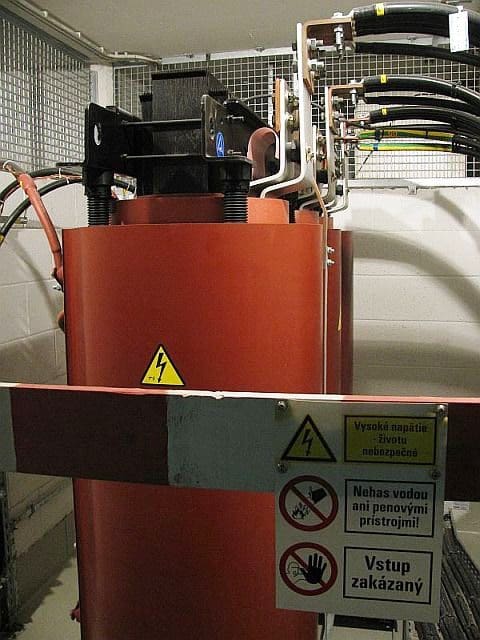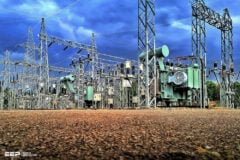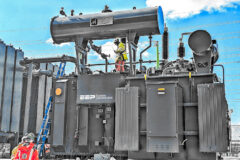Precautions to minimize transformer noise
There are a number of basic installation precautions and transformer mounting techniques which if carefully noted and followed, will minimize the audible sound level (noise) of energized transformers.

Some of the more pertinent ones are noted below.
Transformer decibel limits //
Proper location is the first consideration in a low sound level installation. To keep within or (better) below, prescribed decibel limits:
Rule #1
Keep the transformer as far away as possible from the area in which its noise would be most objectionable.
Rule #2
Avoid mounting the unit in a room corner up near the ceiling. Three sided corners act as megaphones and amplify the sound.
Rule #3
Avoid installation in narrow halls and corridors or in corners of stairwells. The transformer sound reflected from the walls can become additive to the primary sound of the transformer and cause additional decibel buildup.
Rule #4
Where feasible, experimental temporary operation and positioning of a free-standing transformer in a room or area will quickly indicate the best location and orientation of the unit.
Rule #5
Where necessary, cover the walls of the transformer room with acoustical dampening material – fiber glass, acoustical tile, kimsul and similar absorbent materials – to reduce propagation of transformer noise from the room to any adjacent areas.
While there are special sound insulating materials available for the 120 cps frequency range, their present form and cost make them impractical for the above application.
Transformer mounting methods //
Transformer mounting methods play an important role in control and reduction of the audible sound coming from the unit. The prime objective is to “isolate” the noise – that is, prevent its mechanical transmission to the supporting structure and connected raceway system.
This can be accomplished with one, or a combination of the following installation techniques:
Technique #1
Use solid mounting when the transformer can be secured to a heavy, solid mass which cannot vibrate audibly, such as reinforced concrete – floor or wall.


Technique #2
For installation on a structural frame, wall, ceiling or column. use the flexible mounting technique employing special vibration dampeners. There must be no solid metal contact between the transformer and supporting surface, otherwise the vibration of the pads would be ”short-circuited”.
These external pads are furnished and installed by the electrical contractor.
Technique #3
Use flexible connections between the raceway system and transformer enclosure to prevent transmission of noise vibrations from the enclosure to the raceway system, panels, and other mechanical parts. Flexible metal conduit and nonmetallic tubing are acceptable items for these relatively short “coupling” sections.


Technique #4
Dry-type transformers are provided with vibration dampening pads between core and coil assembly mounting and the case. This mounting is tightly secured with bolts for mechanical strength when shipped.
After installation of the unit these mounting bolts must be removed for effective vibration dampening and minimizing of noise.
Technique #5
If used, lifting eyebolts may contribute to high sound level and should be removed after installation.
Technique #6
Be sure all screws and bolts on covers and top are fight.
Reference // Spang Power electronics – Dry-type transformer installation











Good article: stop-transformer-noise-with-these-rules-and-techniques. Typically these examples pick the largest units to demonstrate but do these same rules apply to small transformer installations like a door bell or fan? And will transformers emit low EMF or RF? I have a lot of background acoustic noise emitting a high pitched decibel noise. It varies throughout the day. My acoustic meter and other RF detectors pick up the interference even when the circuits are off. I test with all electronics in the house turned off. Noise ranges up to 0.30 V/m. I found small transformers connected by CAT 5e wire vs standard low voltage red & white wire.
Thank you in advance.
I suggest we make chance for the download of the files in this website so we can better learn. Thanks
Pulsating, beating noises waken me at 4:30 a.m. and seem to stop around 1:00 p.m., or diminish so as not to be irritating. When any electrical appliance is operating, the sound is intensified. Also seems the wind and cars intensify the sound. There is an electrical transformer box very close, next to, my house in front and less than 100 meters from a street drain directly in front of my house and wind turbine a few miles away. I suspect that is the culprit. I am becoming extremely distressed and need help. I have a soft noise box but it distresses my sleep and wake. Is there any cure?